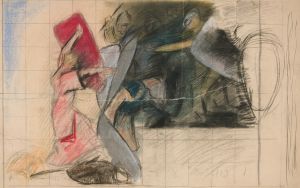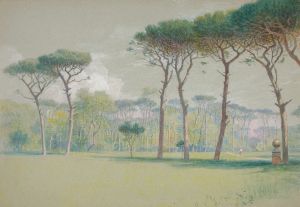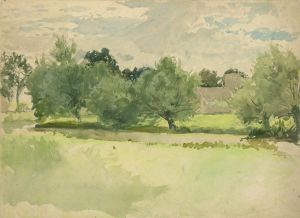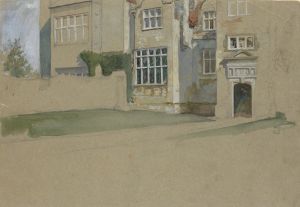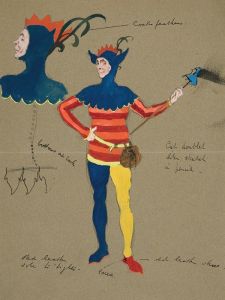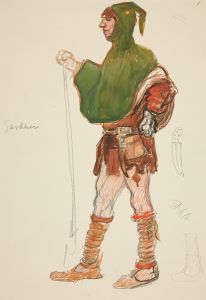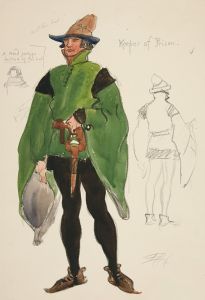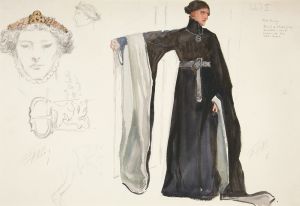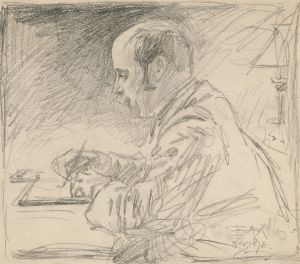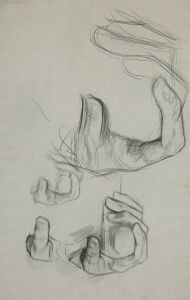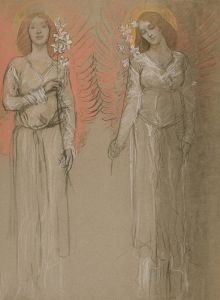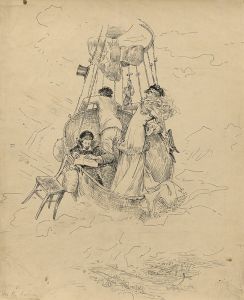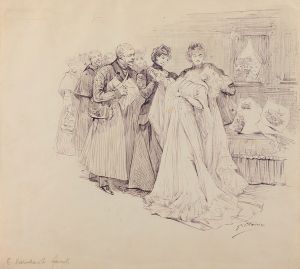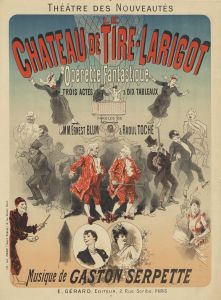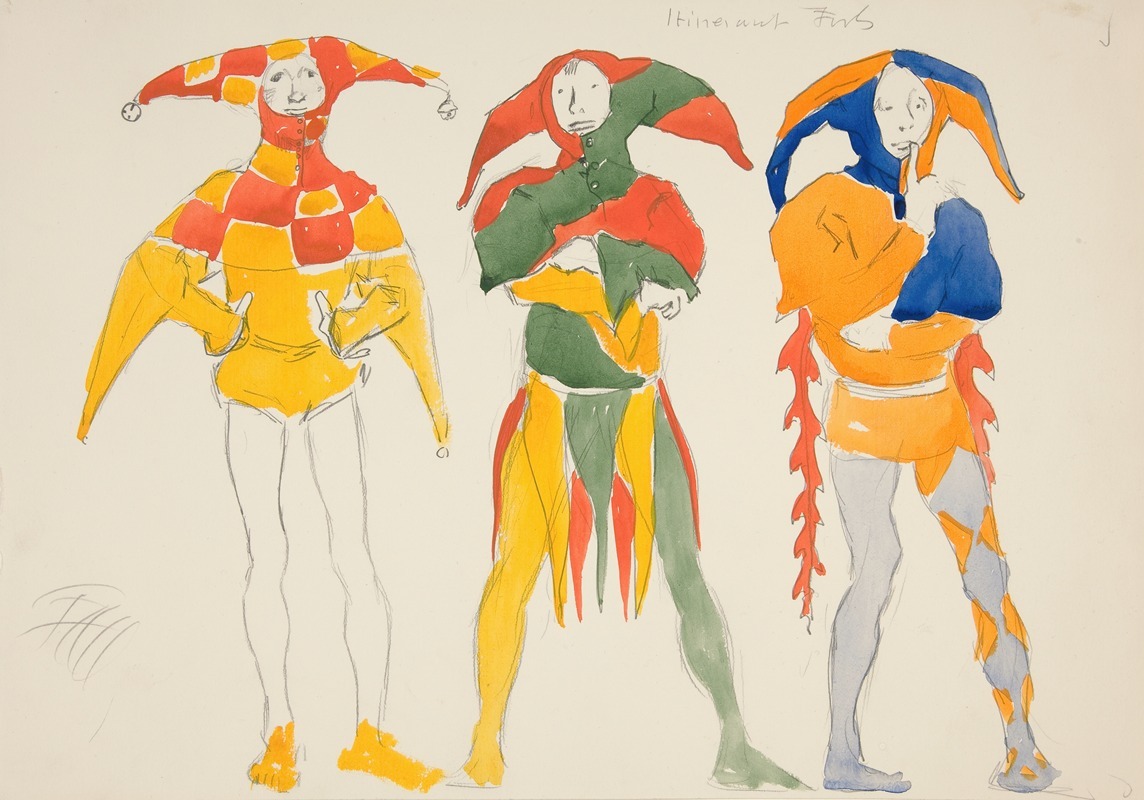
Itinerant Fools, costume sketch for Henry Irving’s 1898 Planned Production of Richard II
A hand-painted replica of Edwin Austin Abbey’s masterpiece Itinerant Fools, costume sketch for Henry Irving’s 1898 Planned Production of Richard II, meticulously crafted by professional artists to capture the true essence of the original. Each piece is created with museum-quality canvas and rare mineral pigments, carefully painted by experienced artists with delicate brushstrokes and rich, layered colors to perfectly recreate the texture of the original artwork. Unlike machine-printed reproductions, this hand-painted version brings the painting to life, infused with the artist’s emotions and skill in every stroke. Whether for personal collection or home decoration, it instantly elevates the artistic atmosphere of any space.
"Itinerant Fools, costume sketch for Henry Irving’s 1898 Planned Production of Richard II" is a notable artwork created by the American artist Edwin Austin Abbey. This piece is a costume sketch intended for a theatrical production of William Shakespeare's historical play "Richard II," which was planned by the renowned English actor-manager Sir Henry Irving in 1898.
Edwin Austin Abbey (1852-1911) was a distinguished illustrator and painter, known for his detailed and historically accurate depictions of Shakespearean scenes. Abbey's work was highly regarded in both the United States and the United Kingdom, and he was particularly celebrated for his ability to capture the essence of Elizabethan and medieval settings.
Henry Irving (1838-1905) was one of the most famous actors and theatre managers of the Victorian era. He was the first actor to be knighted, receiving this honor in 1895. Irving was known for his ambitious and elaborate productions of Shakespeare's plays, and he often collaborated with leading artists and designers of his time to create visually stunning performances.
The sketch "Itinerant Fools" is part of a series of costume designs Abbey created for Irving's planned production of "Richard II." Although the production never came to fruition, the sketches remain a testament to the meticulous planning and artistic collaboration that went into Irving's theatrical endeavors. The drawing depicts a group of itinerant fools, characters that would have added a touch of comic relief and color to the historical drama.
Abbey's costume sketches are characterized by their attention to detail and historical accuracy. He conducted extensive research to ensure that the costumes reflected the period accurately, drawing inspiration from historical texts, paintings, and artifacts. This dedication to authenticity is evident in the intricate designs and careful rendering of fabrics, patterns, and accessories in the "Itinerant Fools" sketch.
The sketch is executed in pen and ink with watercolor, a medium that Abbey frequently used for his illustrations. The use of watercolor allows for a delicate application of color, enhancing the textures and details of the costumes. The figures in the sketch are depicted with a sense of movement and liveliness, capturing the playful and whimsical nature of the itinerant fools.
Although the planned production of "Richard II" by Henry Irving did not take place, Abbey's costume sketches, including "Itinerant Fools," provide valuable insight into the collaborative process between artists and theatre practitioners during the late 19th century. These sketches are preserved as part of Abbey's legacy and continue to be appreciated for their artistic merit and historical significance.
In summary, "Itinerant Fools, costume sketch for Henry Irving’s 1898 Planned Production of Richard II" by Edwin Austin Abbey is a historically significant artwork that reflects the collaborative efforts of two prominent figures in the arts. Abbey's detailed and historically accurate costume designs offer a glimpse into the elaborate preparations for a theatrical production that, although never realized, remains an important part of the history of Shakespearean theatre.





